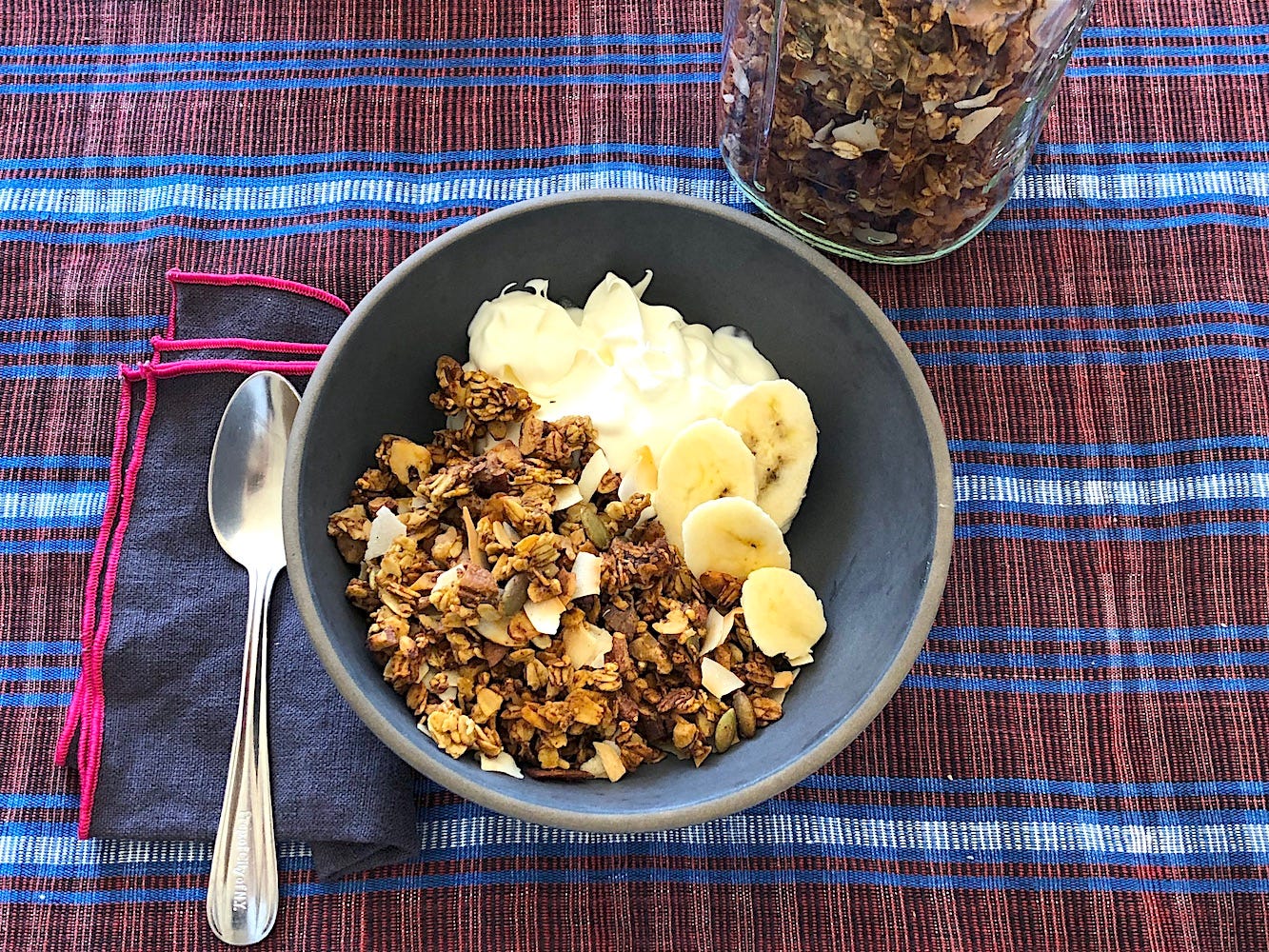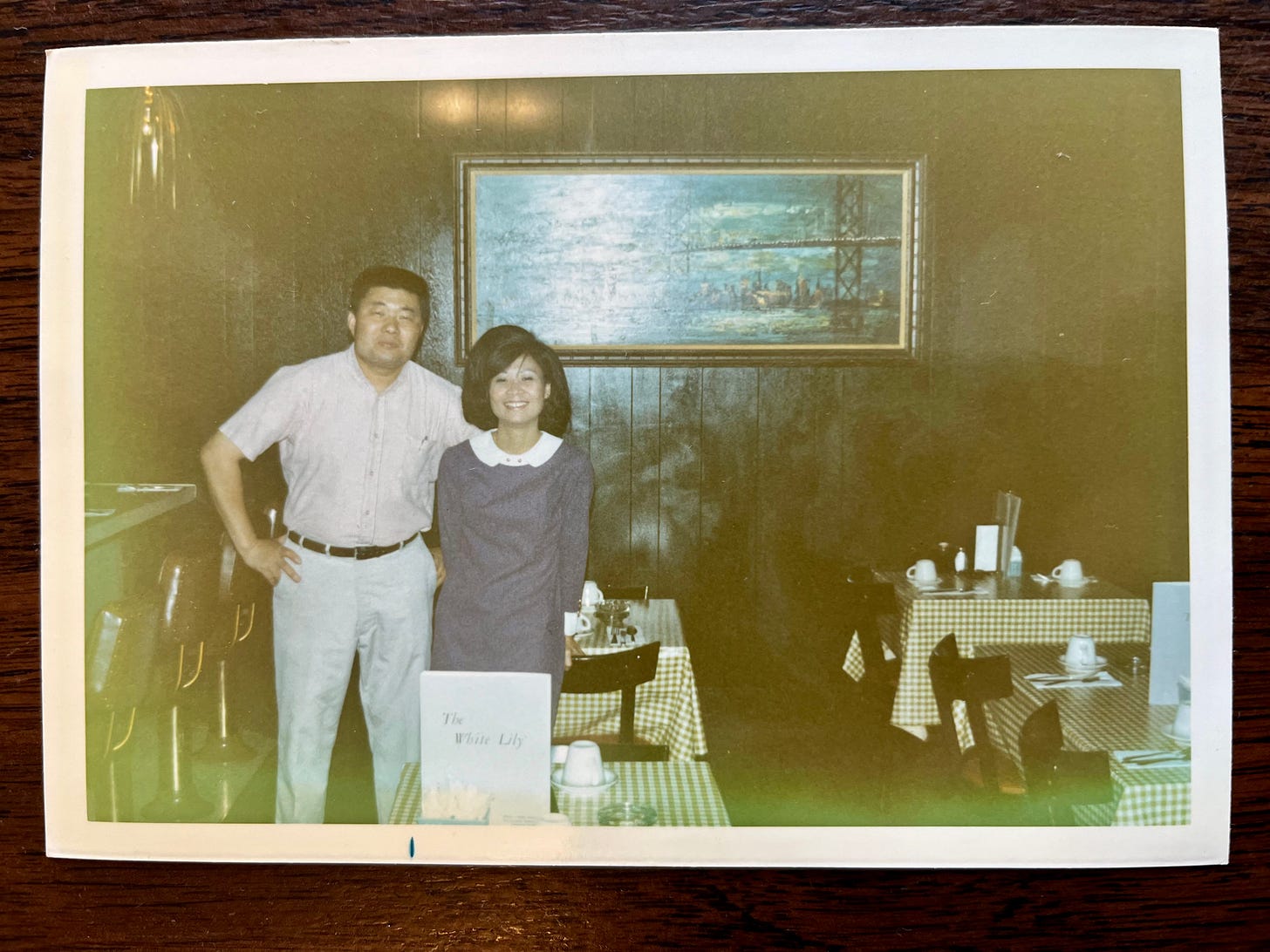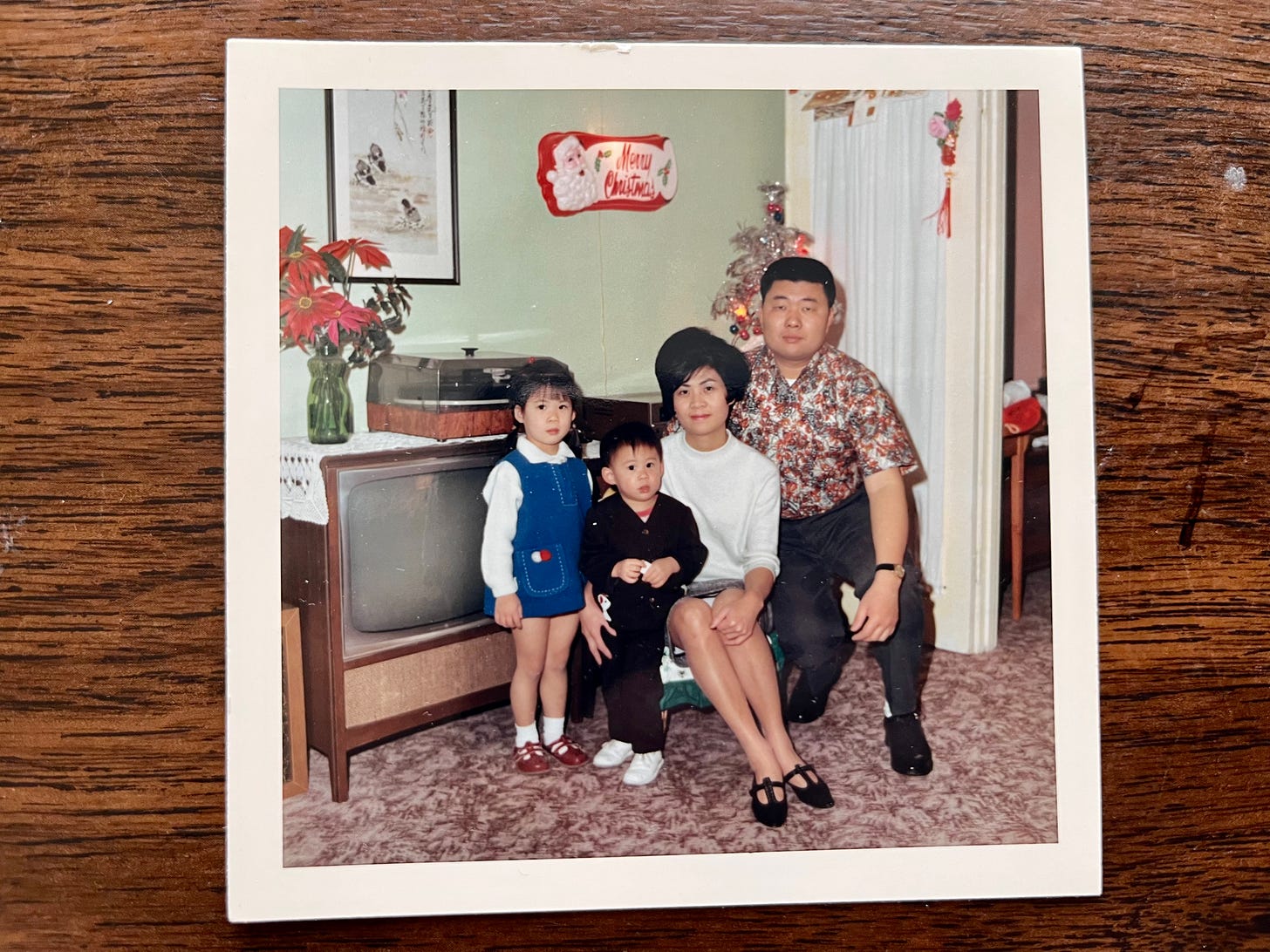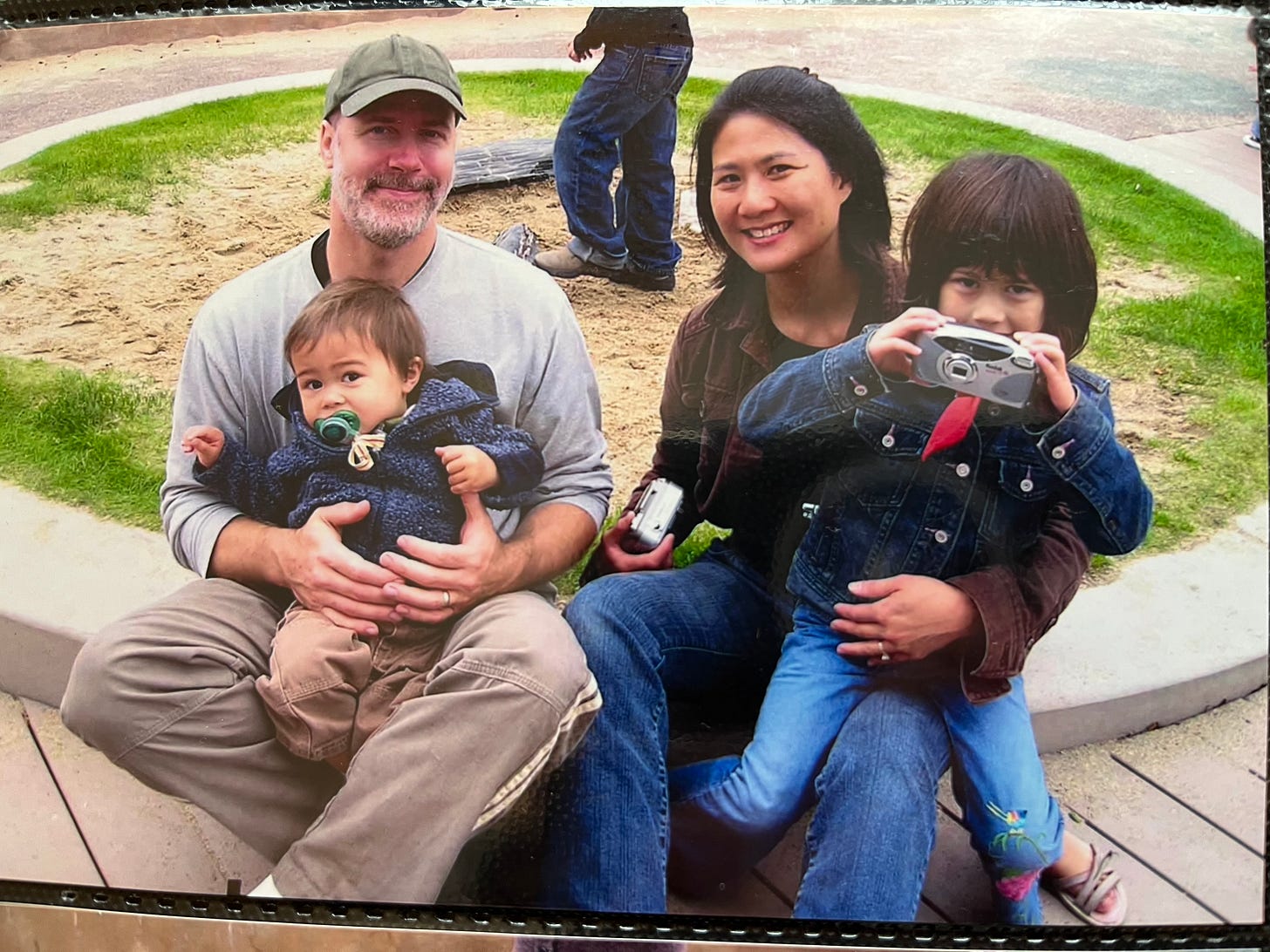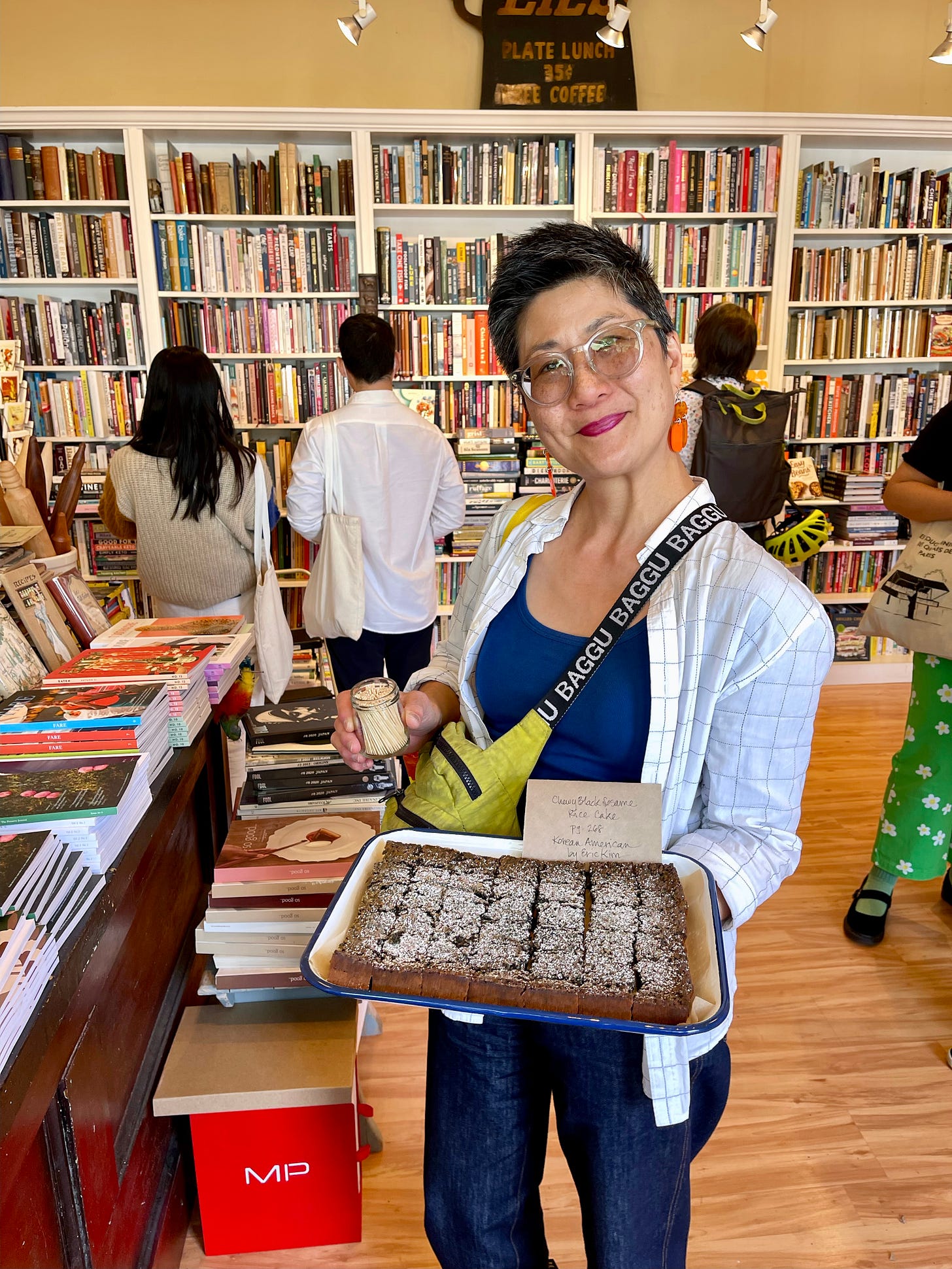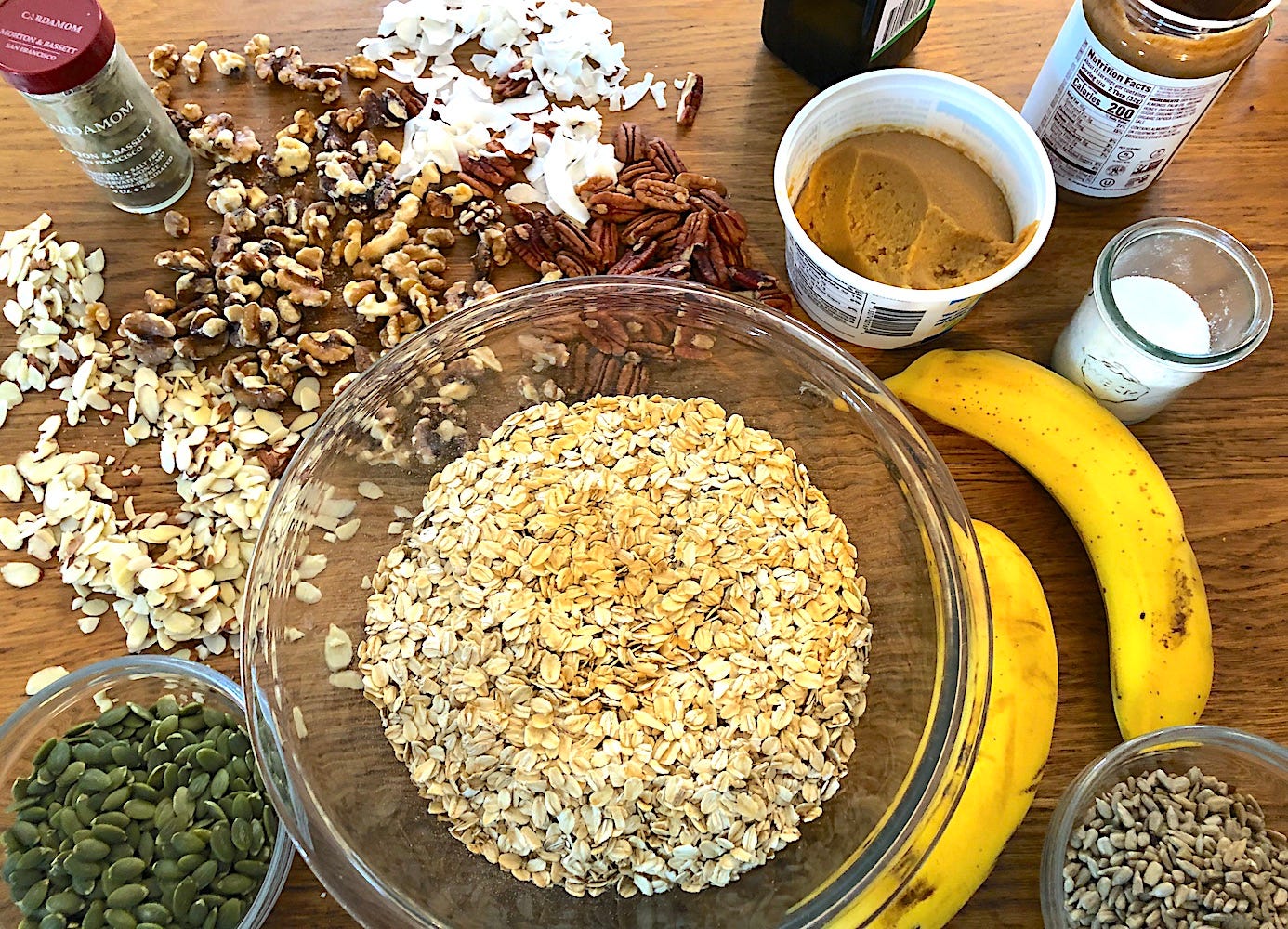Doing Homework in a Chinese-American Diner and Other Stories From a Life in the Food World
An interview with Deborah Kwan of San Francisco
Hello, lovely readers! Apologies for not having a newsletter for you last week; I got pages back on a cookbook I co-wrote with Elizabeth Poett of Magnolia Network’s Ranch to Table, and we’ve been head-down finishing those edits. The book is also available for preorder, so if you like beautiful Central Coast landscapes and food, check it out! It’s been so much fun to work on.
For this week’s newsletter, I got to talk to Deborah Kwan, a San Francisco-based publicist who specializes in working with food and beverage companies. I’ve known Deborah professionally for a number of years (she has amazing clients!), and I’m always hoping to run into her at food events because I have such a great time talking with her. So, I was thrilled to have the opportunity to turn the tables on her, professionally, and find out what she likes to cook. I’m always curious to hear about what food professionals do in their kitchens. In Deborah’s case, I was doubly curious, because I knew that she had trained as a baker in an earlier life and is married to Chef Erik Cosselmon, of Kokkari—and I know from talking with a lot of chefs over the years that they almost never have time to cook at home, so their spouses actually make the food they eat. Deborah told me all about her childhood in San Francisco’s Chinatown, how she taught herself to cook, and how her cooking continues to evolve. She also shared her recipe for a fantastic savory granola, which you’ll find below. Here’s what she told me, edited and condensed a bit.
Deborah Kwan
My parents met each other in Hong Kong, at a wedding banquet. I think my dad was friends with the groom and my mom was friends with the bride.
This was toward the end of 1962. They started dating, and not long after, my dad's immigration papers to come to the U.S. were approved. He told my mom, “Well, you know, do you want to come with me?” She was a preschool teacher at the time and just thought, Yeah, well, why not? It'll be an adventure.
I only found out this story during a trip to Hong Kong with my parents, during a dinner with my dad's friends. One of his friends said, “Oh, do you know your parents’ love story?” And I said, “No, I don't.” And then my mom tried to shush him. He told me that basically they had only been dating for a month. So, they got married December of 1962.
They wound up in Oklahoma City first, because one of my dad's childhood friends had opened a Chinese restaurant there. As you can imagine, at that time it was probably the only Chinese restaurant in the whole state of Oklahoma. They didn't last too long in Oklahoma because the summer was just so brutal. They relocated to San Francisco, where my dad had some extended family who had immigrated here earlier.
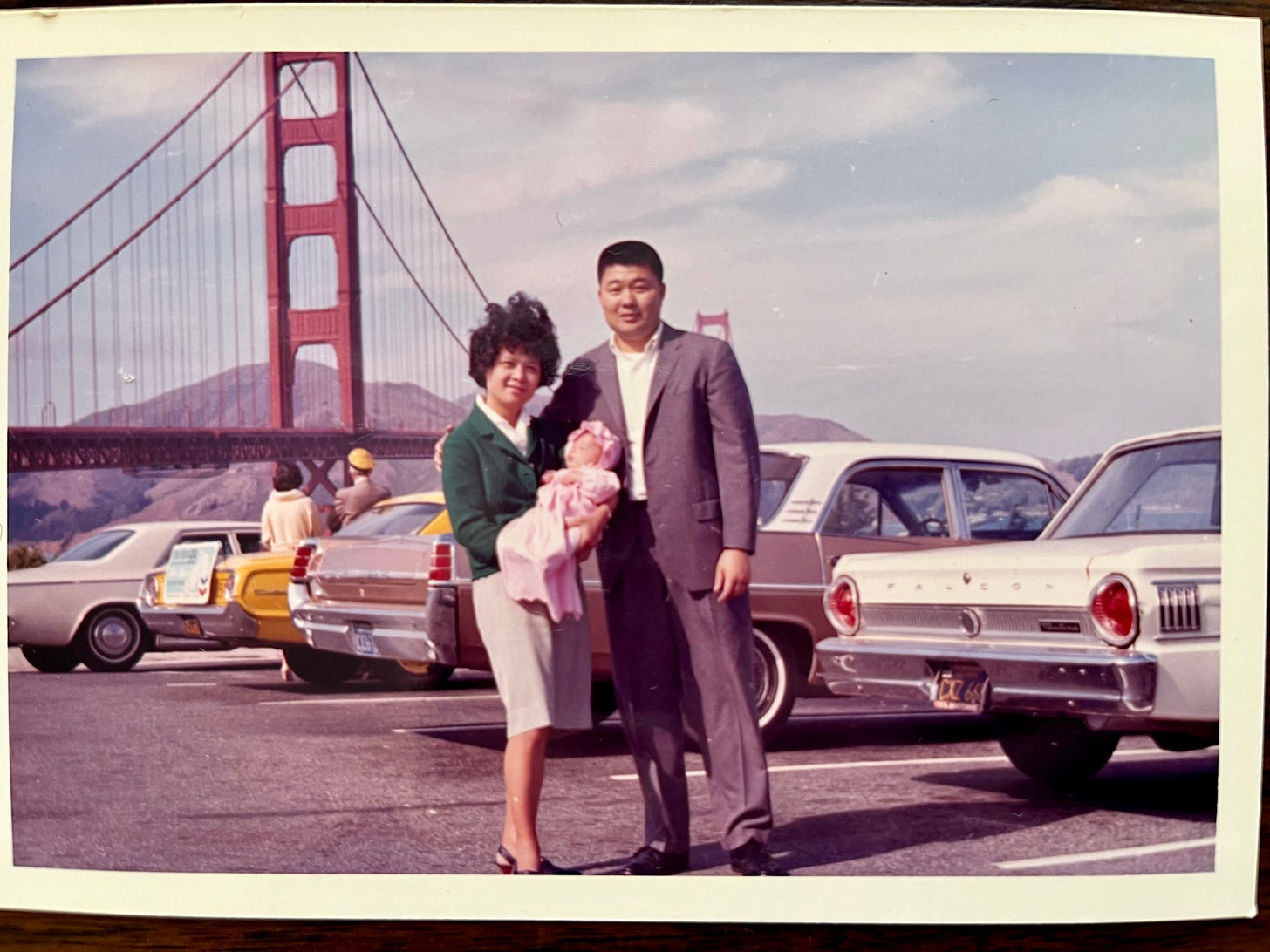
I grew up in North Beach-Telegraph Hill, on Green and Kearny Street. My dad's aunt had a four-unit building. We were on the top floor, my dad's sister and her husband and three kids were on the lower floor, and then there was a non-relative between us who had to deal with the noise of us constantly running up and down the stairs. My aunt (who I called “Second Great Aunt”) and her daughter were in the back. I grew up there and went to kindergarten at Garfield, which is a public school up on Telegraph Hill, up by Coit Tower.
My dad worked as a cook when he first got to San Francisco, because he didn't have the language, so that was what was open to him at the time. My mom helped out, and we had another aunt who would come and care for me and my brother during the day. My dad eventually partnered with a friend to open a Chinese-American diner, and then he and my mom opened a diner right behind the old Emporium building, which is where the Nordstrom and the Westfield mall is now. It was called The White Lily. I remember going there after school.
All the folks from the Chronicle and the Examiner would come and eat there, and people who worked at the Emporium, which was a big department store. They were always known for their eggs and sausage, but also chow mein and sweet and sour pork, and fried wontons, wonton soup. So, it was sort of your classic Chinese-American diner menu.
My parents transferred me to a Chinese Catholic school in Chinatown called St. Mary's, and I remember my mom would pick me up at around three, which was between lunch and dinner service at the restaurant. She would pick me up, and we would walk on Stockton Street and do the shopping. I remember going to the fish market and the butcher shop and the produce market and picking up vegetables. And then she would cook a meal for me and then leave for the dinner shift. I remember there was always rice, there was always some sort of meat patty—like a steamed meat patty with minced pork and shiitakes—there'd be tofu or vegetables on the side. Sometimes she'd buy a roast duck on special occasions. It was generally pretty simple. Another of my dad's aunts (whom I called “Big Great Aunt,” because she was the oldest of my great aunts) would be there to take care of my brother and me in the evening, and she'd stay until my parents got back from the dinner shift.
The hot lunch at school was Western, and it was nasty. They would have things like mashed potatoes made from potato flakes. And I remember bringing a hot lunch that my mom packed— always a thermos, because my mom thought you need to have a hot lunch. Usually it was something like a chicken broth with macaroni, and bok choy, that my mom would make. And, of course, by the time I opened the thermos, the bok choy would be completely wilted and the macaroni would be all engorged.
When I was seven, my parents bought the house that they're still in, in the Sunset. So, suddenly we were plopped in the Sunset, not near Chinatown. I remember getting driven to school, and then going to the restaurant after school and doing homework in the back.
My mom still cooked Chinese food. I remember there was always rice and vegetables and fish and some sort of pork or chicken. Sometimes they would buy a char siu or roast see yao gai, soy sauce chicken. I remember saying, “Why do we have to have Chinese food all the time?” On weekends, they would take my brother and me to McDonald's. It gave my mom a break from cooking. And then they would take us to Golden Gate Park, to the aquarium. I remember going to the aquarium a lot.
After we moved to the Sunset, my parents would leave my brother and me at home alone on weekends when they went to work. While I wasn't allowed to turn on the stove, I had permission to use the oven to heat up Swanson frozen tv dinners. That led to my first baking foray with store-bought frozen chocolate chip cookie dough. I burnt that first batch, but my parents were brave enough to taste them and even compliment the effort. When I was 12, I read an article about croissants and attempted to make them at home, despite having no experience making any type of pastry from scratch, let alone laminated dough! It was an utter failure. After that, I slowly built my skills making simple things: drop cookies, fruit crisps, and quick breads. And when I was ready to expand my repertoire, I bought a shiny black KitchenAid mixer at Broadway Panhandler that I still use.
I learned to cook on my own. My mom would do the cooking at home and would kind of shoo me out of the kitchen. So, I didn't start really cooking on my own until when I moved to New York and I was living on my own, and I could do my own shopping and cooking. (I can't even count college because that was reheating stuff.) I started cooking for myself and for friends.
I went to UC Berkeley. I majored in English. And my parents thought I was going to be a teacher, and then they had heard, Oh, you could go to law school. The funny thing was, I did wind up working at a law firm when I first graduated from Cal. But my plan was to move to New York and work in either magazine or book publishing.
My favorite kids' books growing up were set in New York. Harriet the Spy, and From the Mixed-Up Files of Mrs. Basil E. Frankweiler. Those were two of my favorite books growing up. And I just thought that kids who grew up in New York had this amazing amount of freedom.
I took a night class in copy editing and book marketing, and the teacher, Jean-Louis Brindamour, had had a long career in New York book publishing and relocated to San Francisco to start his own small press. When I told him that I was going to New York for spring break and I wanted to relocate there to work at book publishing, he offered to write letters of introduction to his friends. This is the early 80s, so (this sounds so last century) he literally wrote letters of introduction. And he gave me the names of people, and I called to make an appointment to meet with them.
And it was really great. He had me meet with amazing people. There was someone in sub rights at St. Martin's Press. There was Michael Korda at Simon and Schuster. So, I'm this 20-something-year-old from San Francisco who lived a very sheltered life (except for, you know, I read everything I could get my hands on) suddenly meeting people like Michael Korda and Sally Richardson at St. Martin's Press—people who are really legends in the field.
I lived in in New York for maybe six years, ‘87 to ‘93. I worked at Times Books, at Random House, then I went to Harper & Row right before it became HarperCollins, and then I was at Viking, and then I went to Random House for adult trade.
I started baking a lot during my Random House job. I was really stressed, so I would just bake, which I'd been doing since I was twelve, and bringing it into work. When I started cooking, it was things that I didn't grow up with. So, a lot of Italian and French, and I guess what they called American Food—Western food. And then going to Chinatown when wanted to eat some noodles or Vietnamese food or something like that.
Then I realized I was getting tired of living in New York, and I wanted to switch careers because I realized that if I moved back to San Francisco, publishing just wasn't a big industry out here. But I liked baking—during my last job in publishing, baking helped me deal with stress—and I figured I could develop that skill and it'd be something that I could take with me. So, I cashed out my 401k plan and went to Peter Kump’s [now the Institute of Culinary Education], to the baking program. I worked at 44 at the Royalton, and that's where I met Erik, my husband. He was the dinner sous chef there. And then I worked at Bouley before moving back to San Francisco.
I had told Erik that I was planning to move back to San Francisco, and he had actually done his CIA externship at Auberge du Soleil and had really fallen in love with the Bay Area. By the time he and I met, he was ready to leave New York, too. After we moved, I baked professionally for maybe three or four years, and then I realized I was more front of the house than the back of the house. So, I went back into PR, but for food.
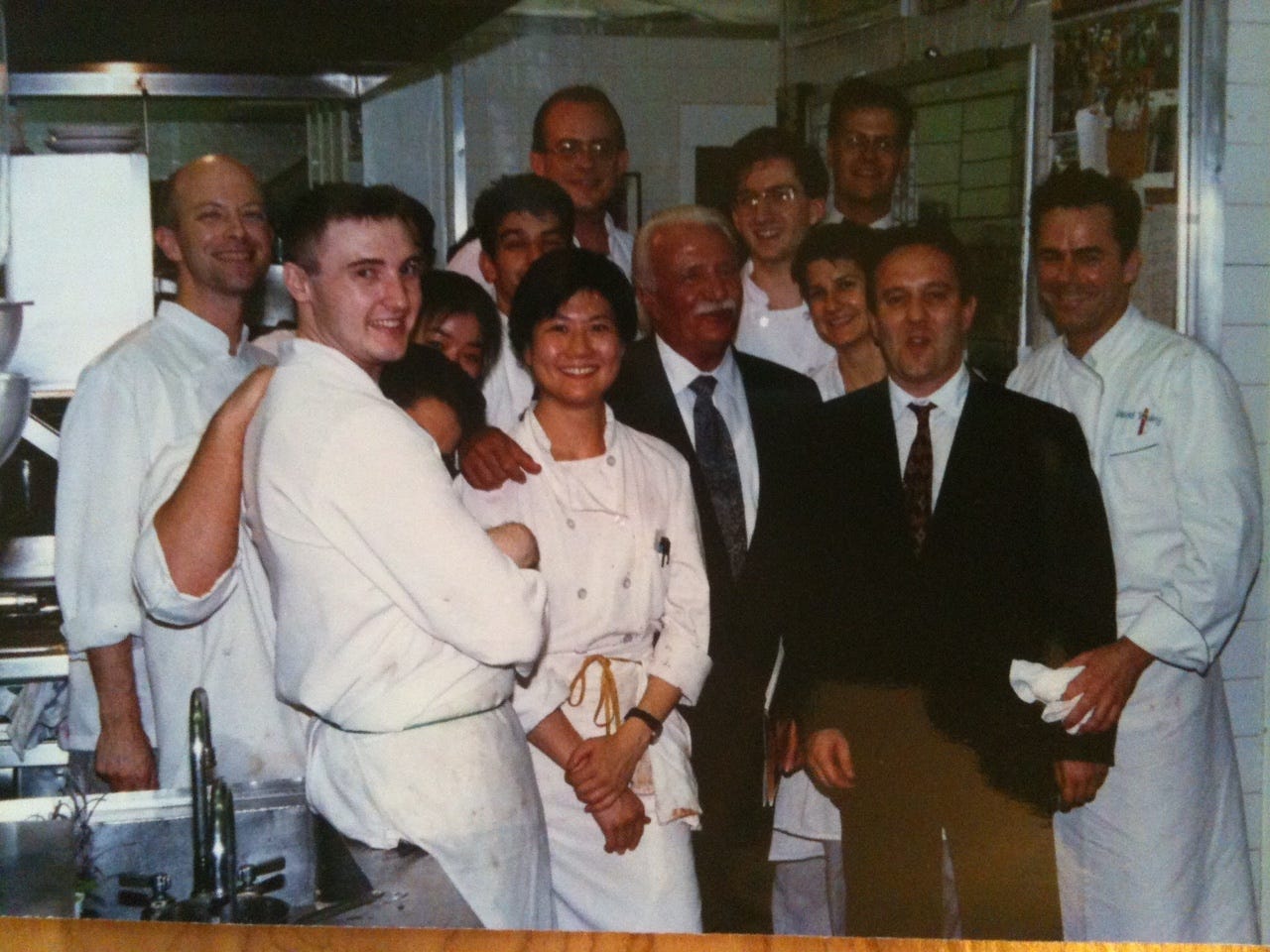
I became a better cook when I was pregnant with our second child. I think it was wanting to feed myself, because I knew I needed to be healthy and strong to care for my older child, Hannah, who was four at the time. I think it was wanting to cook really healthy, nutritious meals that tasted good and would yield leftovers that could be used in other dishes. I also started really reading labels at that point.
Before that, I would usually eat whatever Hannah was having. I think I was too tired to cook a second meal. I was making a lot of pasta—pasta with pesto—and cheese, cut up fruit. We had hot dogs. Tons of rice crackers, string cheese, baby bells. Lots of bananas, grapes, and every kind of fruit. She would also have rice with saucy tofu. And we had lots of either steamed or sautéed vegetables. My mom would supplement, too. She would bring soups and dishes that I could heat up. And lots of takeout dim sum. We'd always have pork buns or something in the freezer.
When I started cooking bigger meals, I was roasting chicken and things like that. Back when I lived in New York, I used to have people over in my tiny apartment, and The Silver Palate Cookbook was a big touchstone for me. I remembered making lots of chicken Marbella, and the three-bean chili from The New Basics. I started doing that for my kids, too, but more plain, not as highly seasoned.
I also became a more resourceful cook during lockdown.
Erik brought home a lot of stuff from Kokkari. What he did was, when lockdown happened, he and his sous chefs packed up all the perishables and dried goods and distributed it to their staff. So, we had lots of lentils and dried beans and lots of things from the restaurant to tide us through those first scary weeks.
My daughter was doing lockdown in her pod in Southern California, and my son was doing distance learning here. I told him, “Okay, you're not going to school, you're just doing distance learning, but I want you to start cooking. You need to learn how to cook. You can use this time at home to cook.” So, he became my sous chef and started cooking. And that became really fun. And I figured also he just had this appetite that was kind of voracious, so he had a vested interest in learning how to cook.
And Erik was home, so, he was cooking, too. Usually he cooks a roast fish and roasted vegetables; he'll do a big tagine. Something stewy. Beans. It’s generally something that's good the next day that's really hearty and flavorful. And as we've gotten older and have to deal with things like high cholesterol and high blood pressure, we’ve really cut out red meat. It's mostly vegetables, fish, poultry.
I was also a sourdough person, and when things started opening up again, I was so relieved not to have to bake sourdough and to actually just buy my loaves. There are so many great sourdough bakers in San Francisco, so I figured I could show my support. I did make kimchi during lockdown as well.
I’m not cooking quite as much these days, because my son is in college now. I was cooking a lot more when he was at home.
I'm inspired by new cookbooks. One of the great things is that the public library, the Excelsior branch, is just a block and a half from my house. And it was one of the first branches to reopen during lockdown, so I could go online and reserve books and pick them up there, and that was my social interaction of the day.
But I love picking out a recipe from a cookbook and making something. I feel it kind of gives me a sense of the wider world. And, also, I've been working in specialty foods, so using different spices helps me get out of my rut.
Just recently I made a recipe from Ali Slagle’s book, lemon-pepper chicken with fennel and potatoes. It was really good. I get the New York Times, and a lot of times I'll look at recipes there. Usually, I'll look at what I have in the vegetable bin, what I have to use up, and I'll do a search and see what recipes pop up.
My mother-in-law lives with us, too, but she eats a lot more simply, less adventurously than we do. So, I make sure that there's something that's milder, that she'll eat. But, you know, sometimes I just cook for me. It's like, What do I want to eat? Usually it's also something that Erik will want to have the next day. One night, I had the night to myself, and I just opened some tins of fish, and I had a day-old baguette, so I did tomato bread. And then other times I'll make a tofu miso soup. Since I've been working from home for the last several years, usually when I make something, it's something that I can use for my lunch or breakfast the next day. And I'm a big one for having something savory for breakfast, whether it's a tofu soup, or something else.
I also make granola. The first time I had a granola that I thought was really good was after a meal at Eleven Madison Park. They gave each diner a jar of granola. And then, not long after, the Wall Street Journal ran the recipe for that granola. So, I started making my own because the granolas I found in stores were stale or never had the combination of fruit and nuts and grains that I wanted.
That recipe has evolved over the years to where I don't put any added sugar in it anymore. It’s usually just extra virgin olive oil, mashed up bananas, and sometimes I'll put miso in there or almond butter. Usually I have lots of bulk nuts and seeds and oats, so I'll do that, and then coconut flakes. I'll use cinnamon, cardamom, ginger, sea salt. For a while I was using turmeric, when everybody was using turmeric, but I've dialed that back. And I make a big batch because I'll send granola to my daughter and my son. It's something I make pretty regularly.
I was making granola and sending it as gifts during lockdown, too. And sometimes other jars and spices by other small makers who've become friends. I think sharing food is really important.
Savory Granola with Banana, Almond Butter, and Miso
This recipe is a fantastic antidote to too-sweet granolas—and it’s a perfect way to use up overripe bananas! It’s also extremely flexible, so you can use whatever nuts and seeds you like. The real key to this recipe is to stir somewhat frequently, so things don’t burn, and to add the coconut chips partway through baking (as they’ll burn quickly). The recipe makes a big batch, so follow Deborah’s lead and share it with friends!
Makes 8 cups
4 cups rolled oats
1 cup puffed millet (or more oats )
2 cups nuts (cashews, walnuts, sliced almonds, and/or pecans), roughly chopped
⅓ cup seeds (pumpkin seeds, sunflower seeds, and/or sesame seeds)
1 tablespoon kosher salt (reduce the amount if using miso; see below)
1 teaspoon ground cardamom
2 teaspoons ground ginger
3 ripe bananas, mashed
⅓ cup extra virgin olive oil
2 tablespoons almond butter (or another nut butter or tahini)
1 tablespoon white miso paste (optional)
1 cup coconut chips
Preheat the oven to 325°F. Line two rimmed sheet trays with parchment or silicone mats.
Put the oats, millet (if using), nuts, seeds, salt, cardamom, and ginger into a large bowl and mix.
Put the the olive oil, mashed banana, almond butter, and miso (if using) into a small saucepan and cook over low heat, stirring, until combined.
Add the liquid to the dry mixture and fold everything together, making sure to coat the dry ingredients well.
Divide the granola between the two prepared baking sheets and spread it out evenly. Bake it for about 30 minutes, stirring a few times along the way and turning the trays so they bake evenly.
Reduce the oven temperature to 275°F, sprinkle the coconut chips over the granola and bake everything for another 15- to 20 minutes, until the coconut chips are lightly golden at the edges.
Turn off the oven and prop the door open with a wooden spoon so the granola dries completely. (Go run errands, read, or see friends!)
Remove the granola from oven and allow it to cool to room temperature before transferring it to an airtight storage container.
More California Stories to Read and Watch—and More Things to Cook!
It’s been a fun couple of weeks for California food stories. Perhaps my favorite was Gastro Obscura’s dive into how a ‘70s cult helped transform how Californians eat. (I also enjoyed their piece about how authorities tried to eradicate Meyer lemons.) The LA Times also did a fun little piece about how the Ivy remains relevant. Last week, an article from KQED introduced me to a super fun online cooking show featuring young immigrant cooks, No Borders, Just Flavors!, that has featured some great CA-based cooks.
For more recipes, check out Andrea Nguyen’s fun newsletter, Pass the Fish Sauce, where she did a three-part deep dive into California’s classic garlic noodles (with multiple recipes); she’s also sharing details of her new book—more on that in a future newsletter. Paola Briseño-González also published a recipe for whole-lemon caldo on her Fresca newsletter.
Photos: Georgia Freedman, Courtesy of Deborah Kwan (5), Saba Parsa, Georgia Freedman




